Landform and Process
Harvard University Graduate School of Design
Department of Landscape Architecture
Landscape Representation III
Lecture Course
Department of Landscape Architecture
Landscape Representation III
Lecture Course
Teaching Faculty: Fionn Byrne, Bradley Cantrell
Description:
Landscape Representation III examines the fundamental relationship between terrain and the landscapes it supports and engenders. This examination will be developed through methods of associative and generative modeling, analysed by quantitative and qualitative means, and visualized through multiple forms of temporal and composite media. The course highlights methods in which these processes are understood and graphically communicated, focusing on a diverse body of historic and contemporary media, positioning landscape architecture as a profession engaging science, art, architecture, urban design, and philosophy. To accompany precedent study, the course engages in advanced exploration of digital media, with fluid transitions between documentation and speculation, 2D and 3D, static and dynamic.
Landscape Representation III examines the fundamental relationship between terrain and the landscapes it supports and engenders. This examination will be developed through methods of associative and generative modeling, analysed by quantitative and qualitative means, and visualized through multiple forms of temporal and composite media. The course highlights methods in which these processes are understood and graphically communicated, focusing on a diverse body of historic and contemporary media, positioning landscape architecture as a profession engaging science, art, architecture, urban design, and philosophy. To accompany precedent study, the course engages in advanced exploration of digital media, with fluid transitions between documentation and speculation, 2D and 3D, static and dynamic.
Course topics are developed within a regional landscape matrix and explore generating contextual topographies towards illustrating time-based processes: from manipulating topographical datasets to analyzing intelligent terrain models, from synthesizing geological, ecological, and hydrological processes to depicting the flows, flux, and ephemera of floral and faunal communities, from understanding circulation patterns to depicting urban settlement patterns. Through simulation, narrative, and graphic extraction, these physical and ephemeral landscape processes will be examined at multiple scales, with particular attention paid to the complexities of large-scale sites in order to complement core coursework in the MLA third term. Students will develop and document engaging forms of representation that advance a representational agenda.
Weekly lectures and lab exercises will provide the foundation for the group’s collective exploration, research, and discussion. Through a series of working labs, students will be exposed to an expanded set of digital techniques for analyzing and generating landform and site processes as a means of advancing both technical and conceptual ability. This format aims to establish fluency in conceptual, organizational, and formal expression as well as to provide a point of departure for an in-depth awareness of landscape precedents and representational techniques.
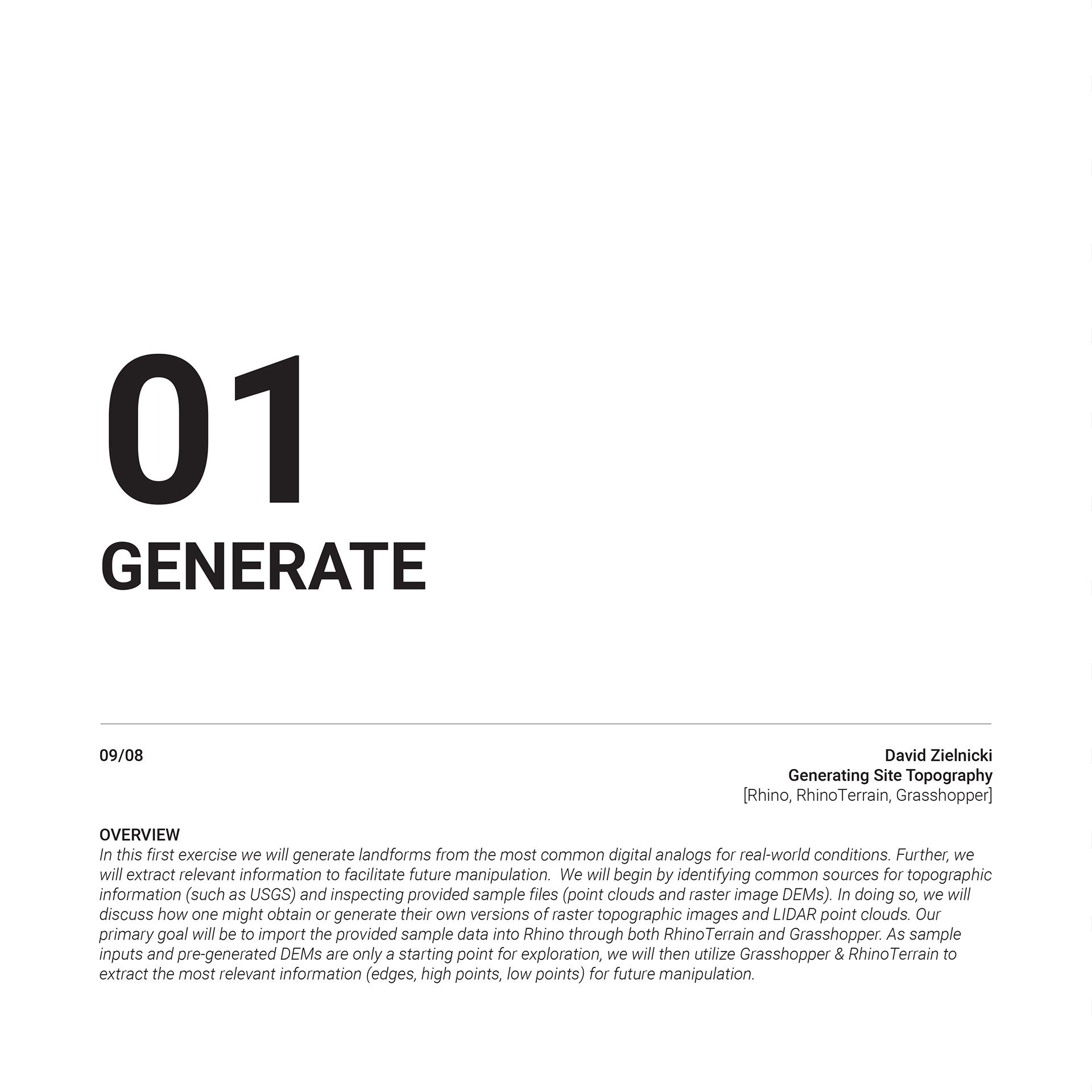

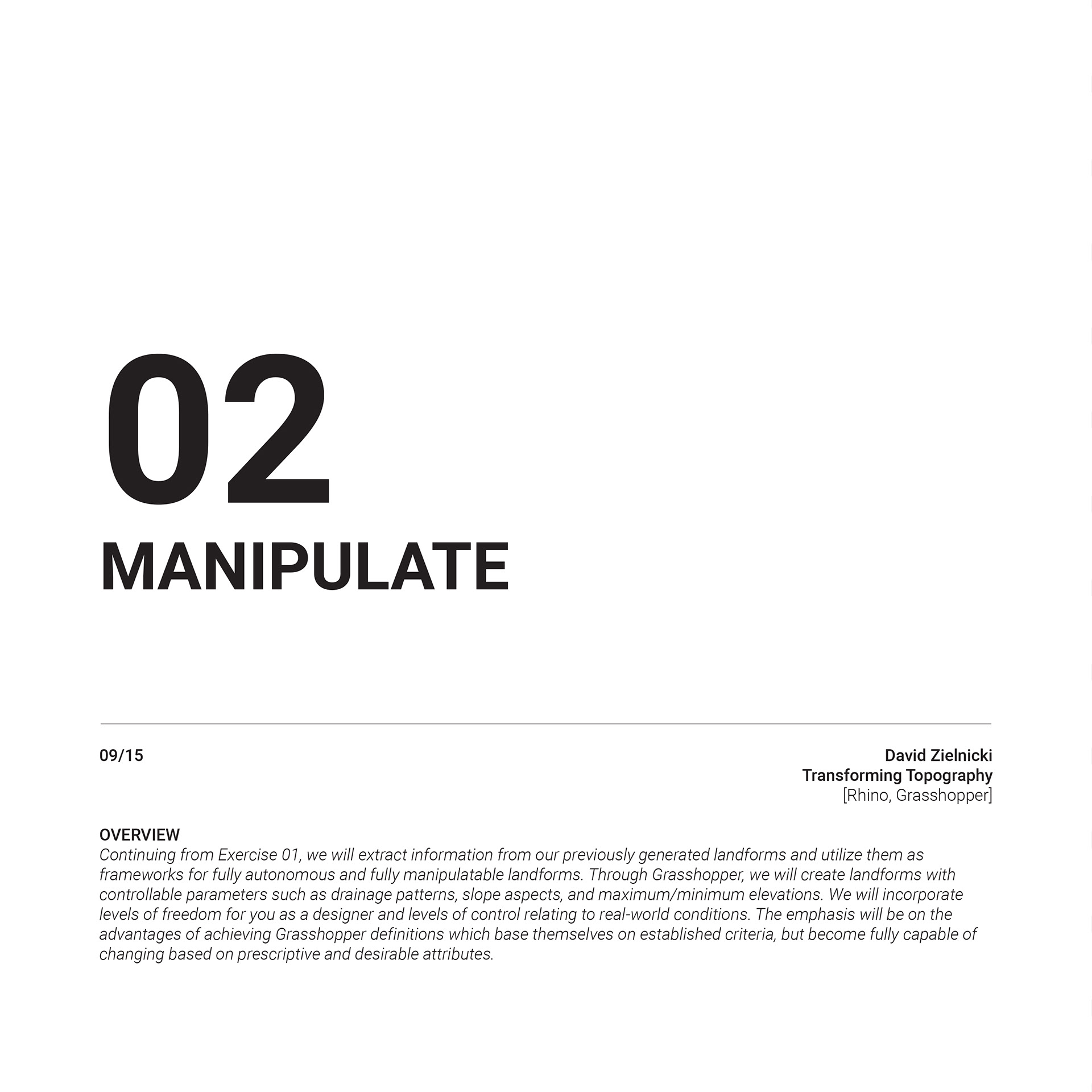
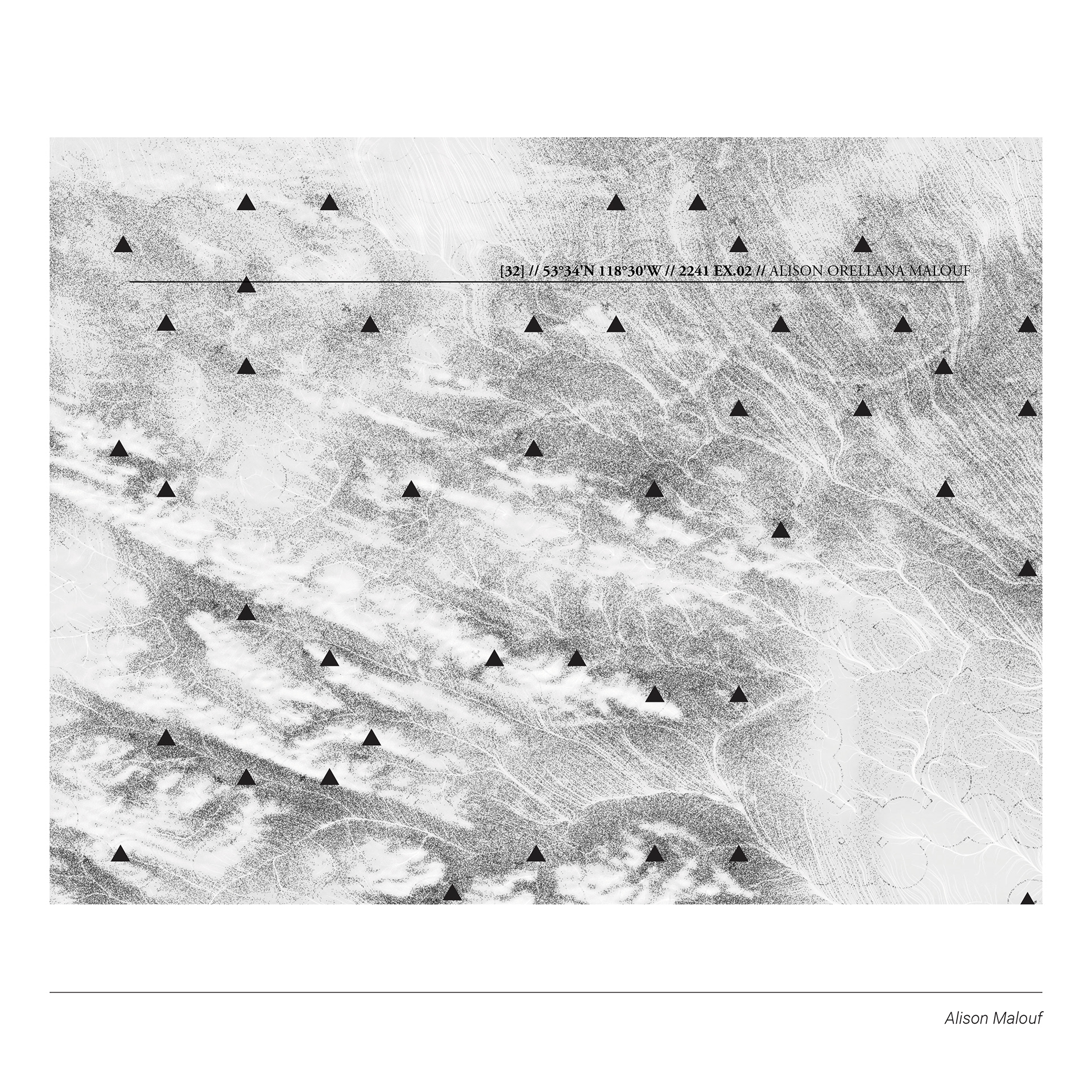

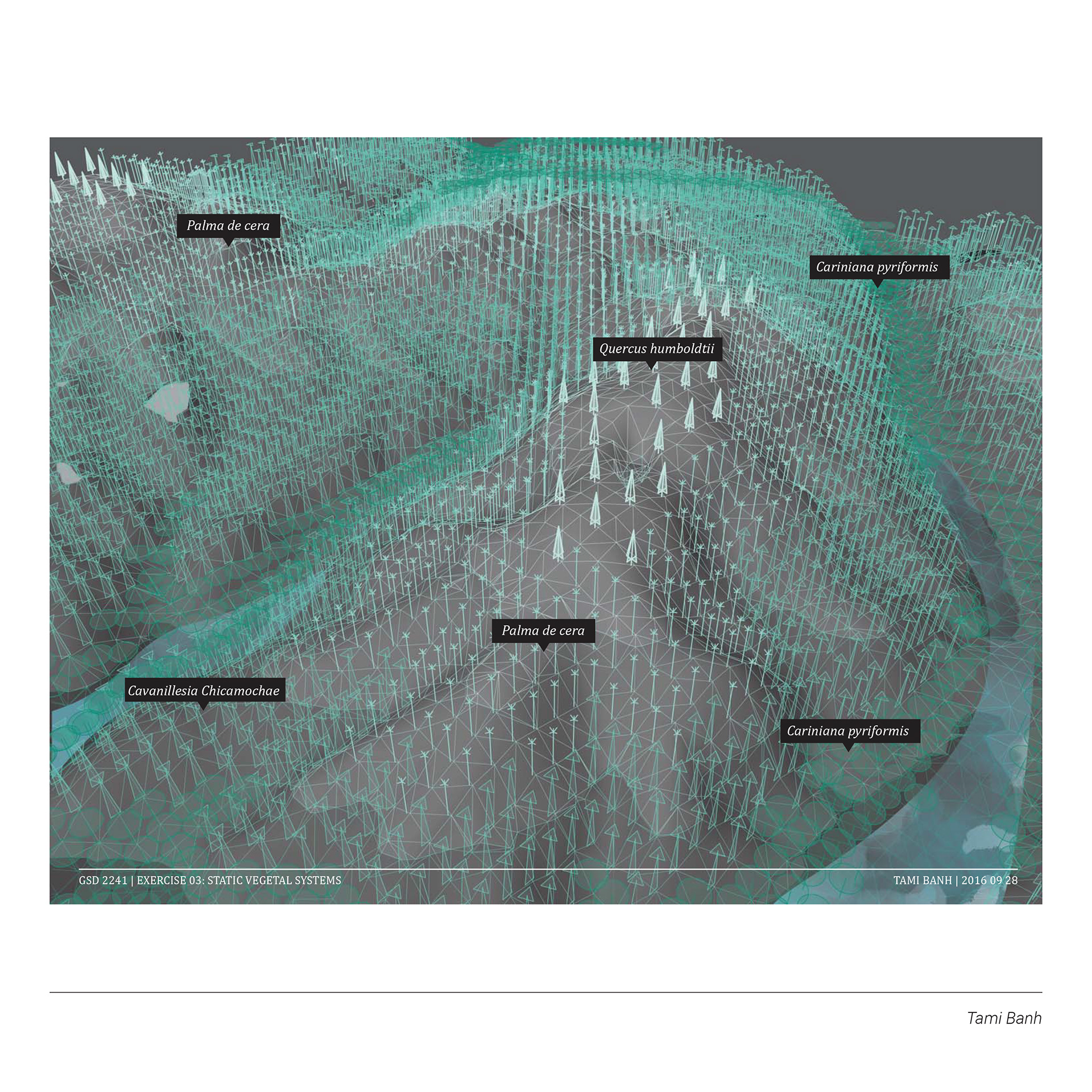
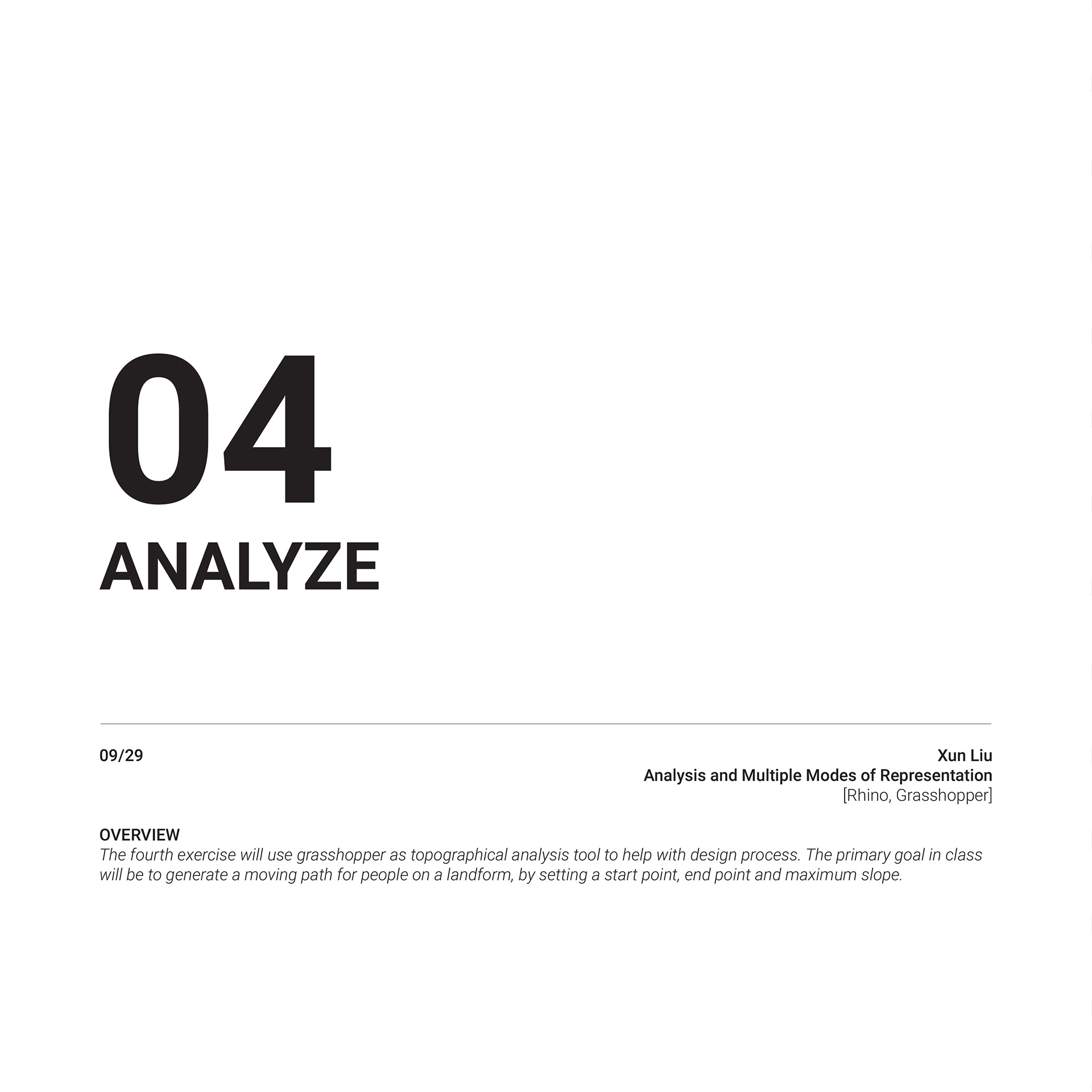
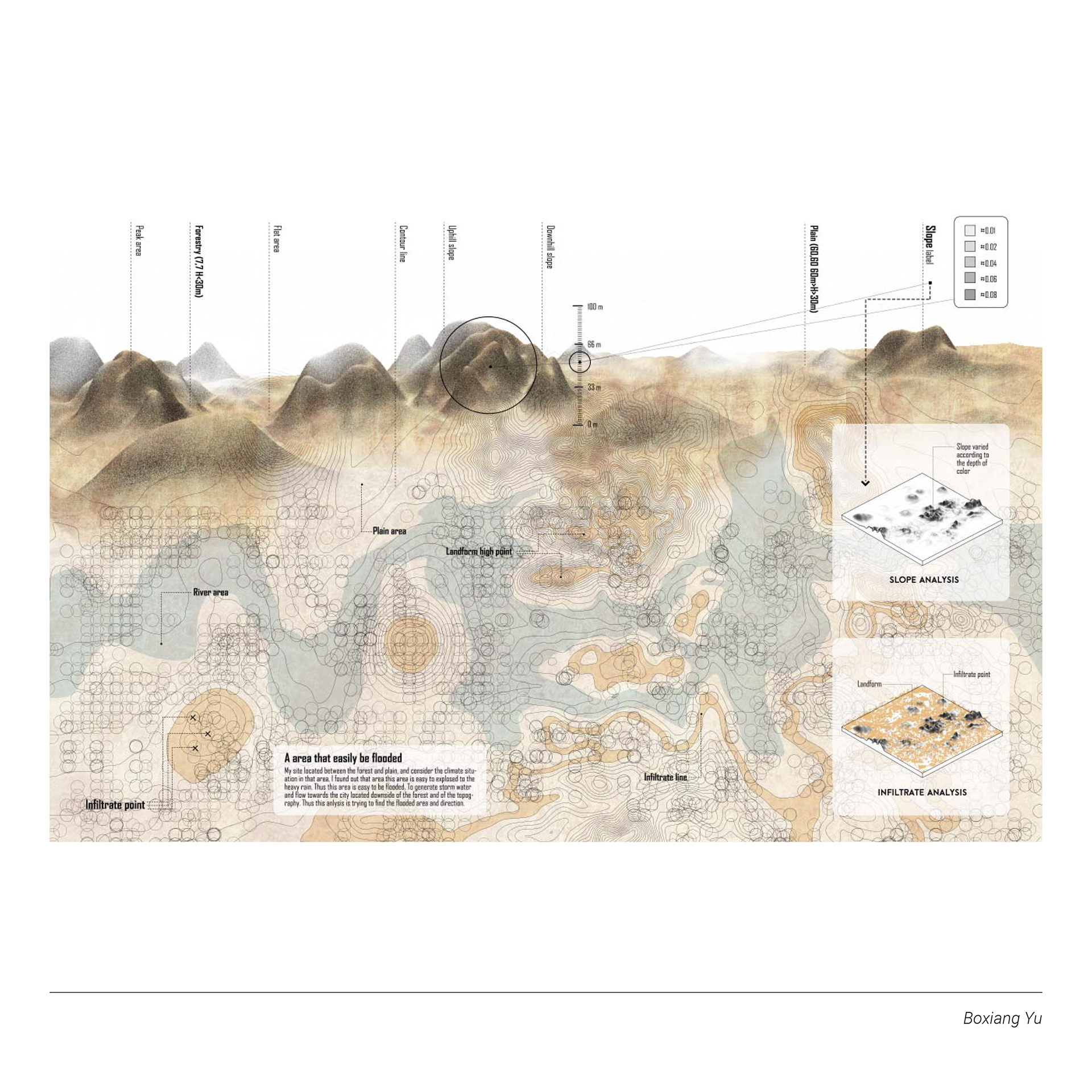
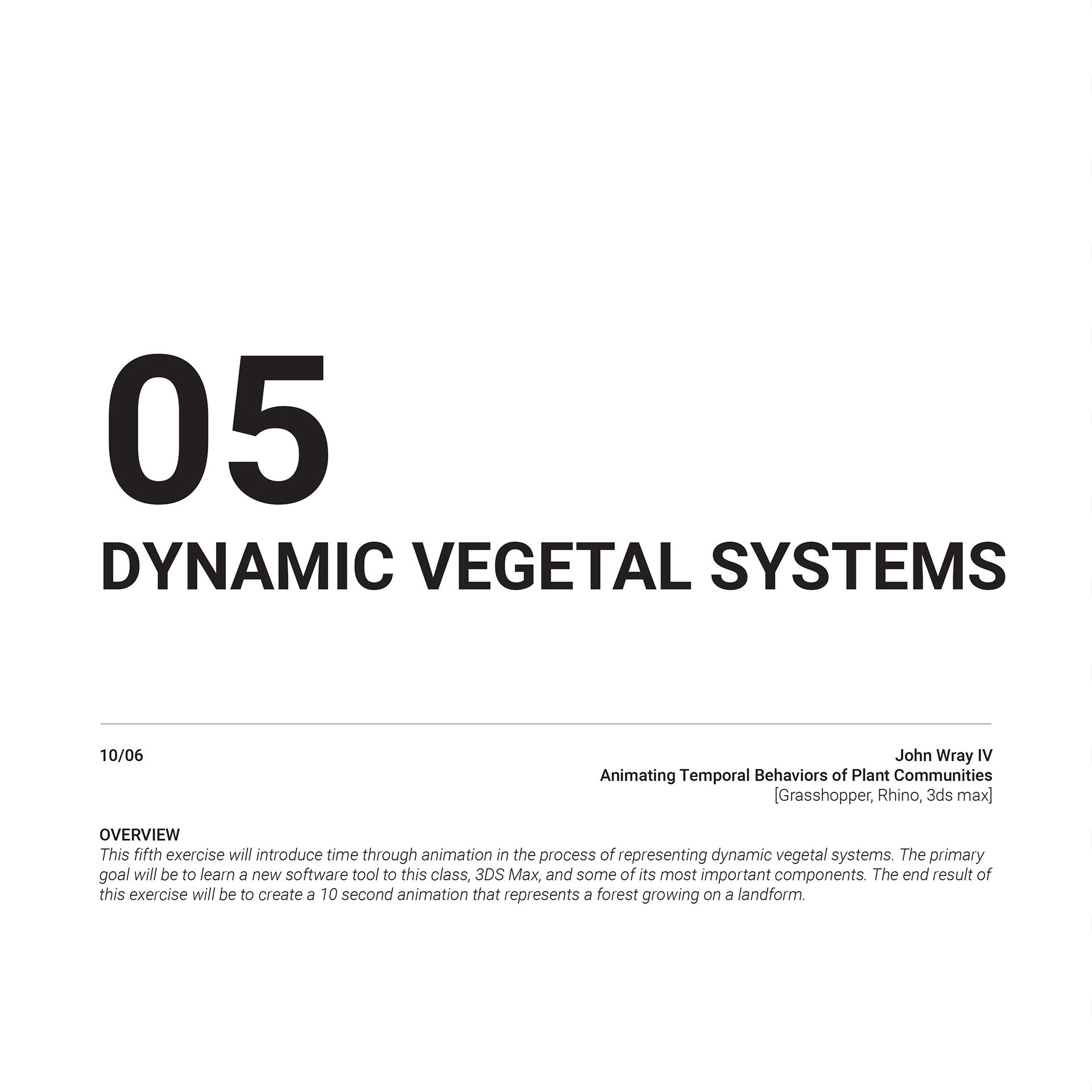



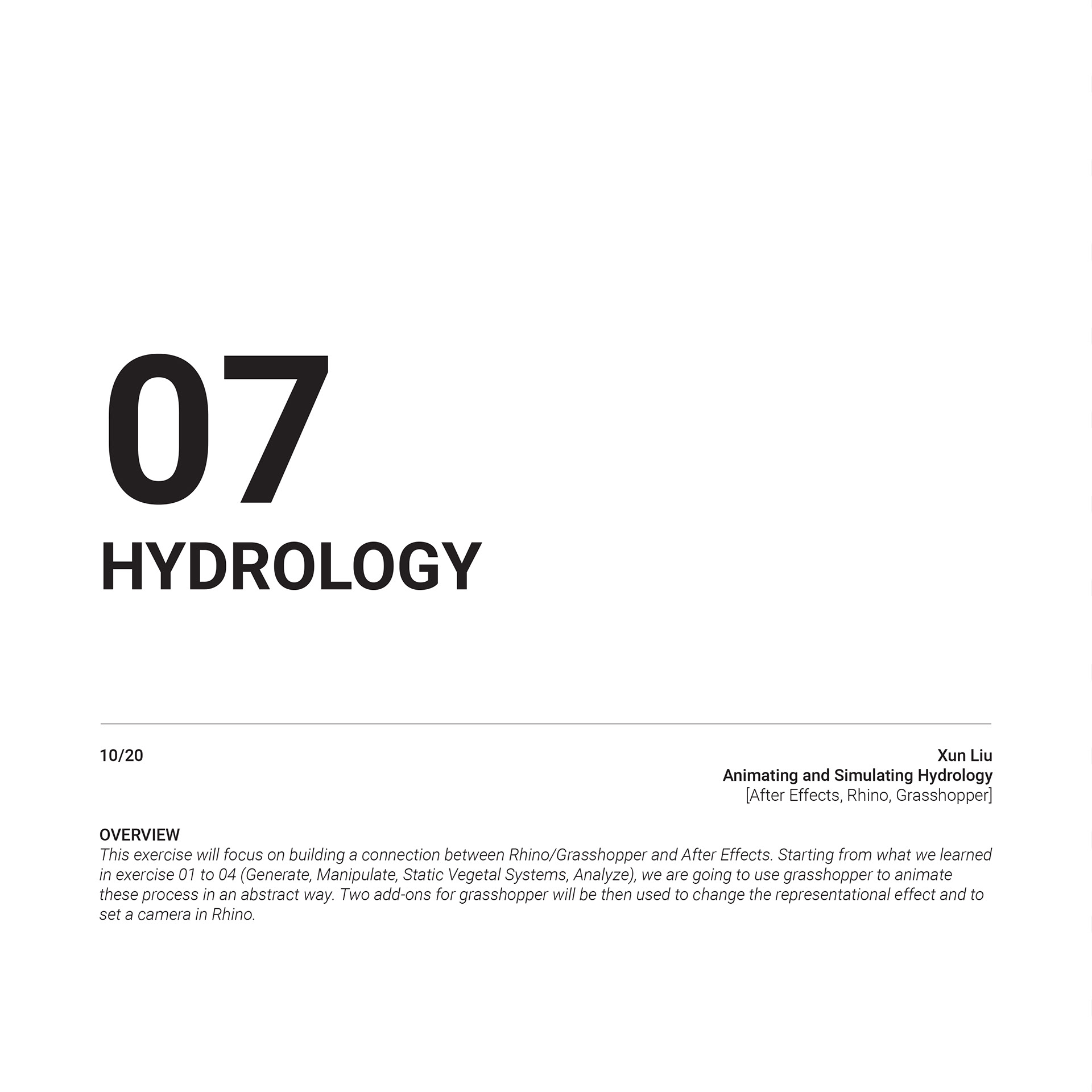


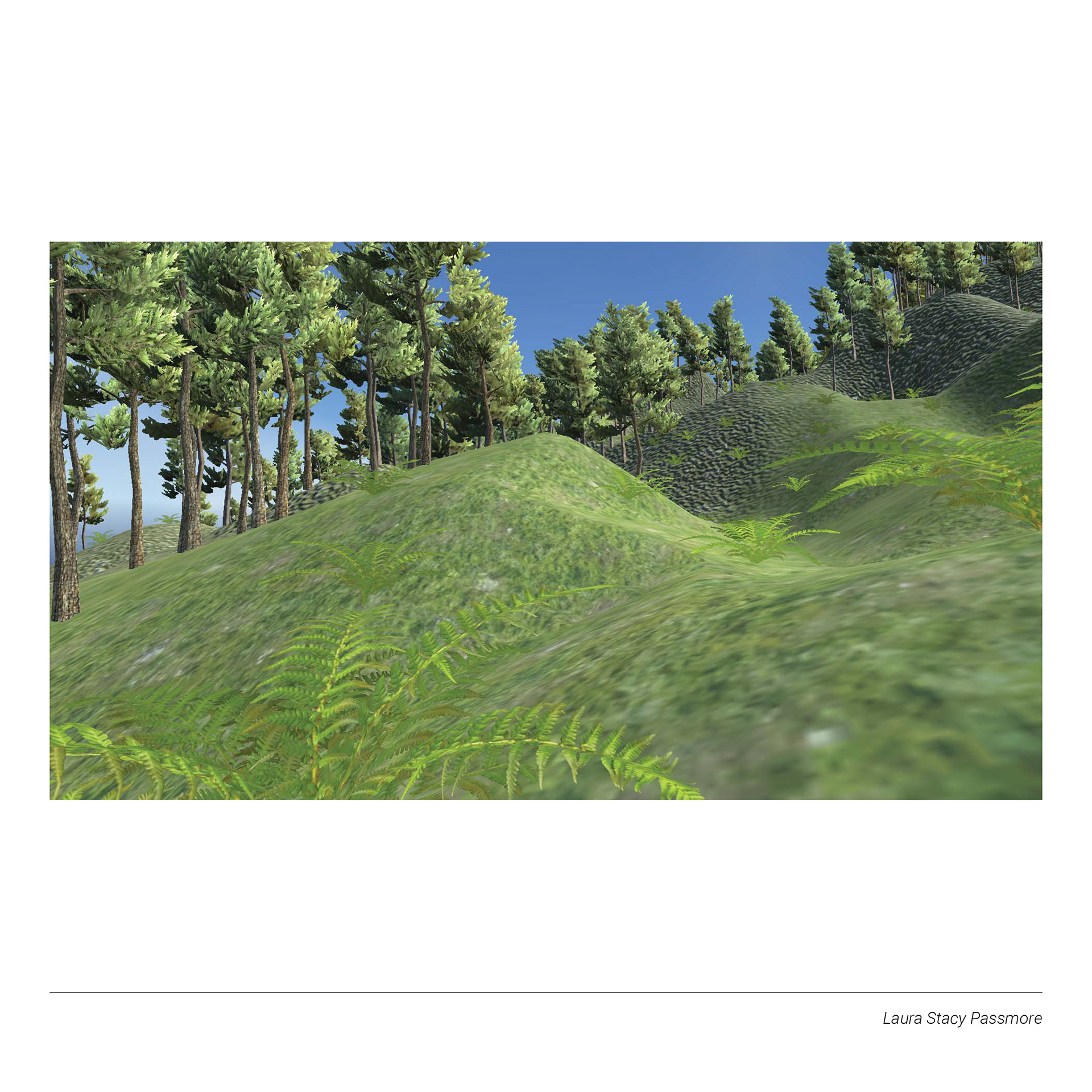
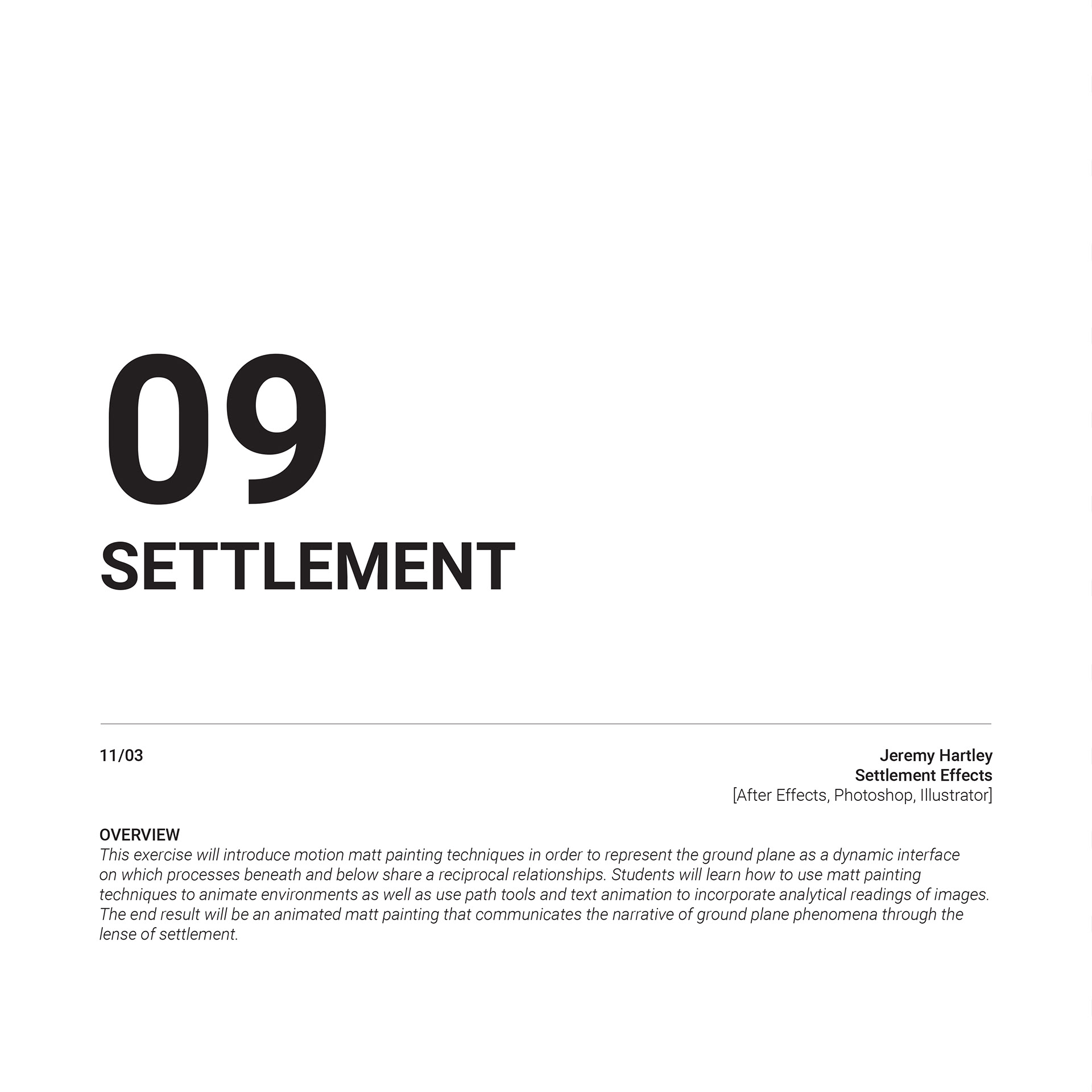
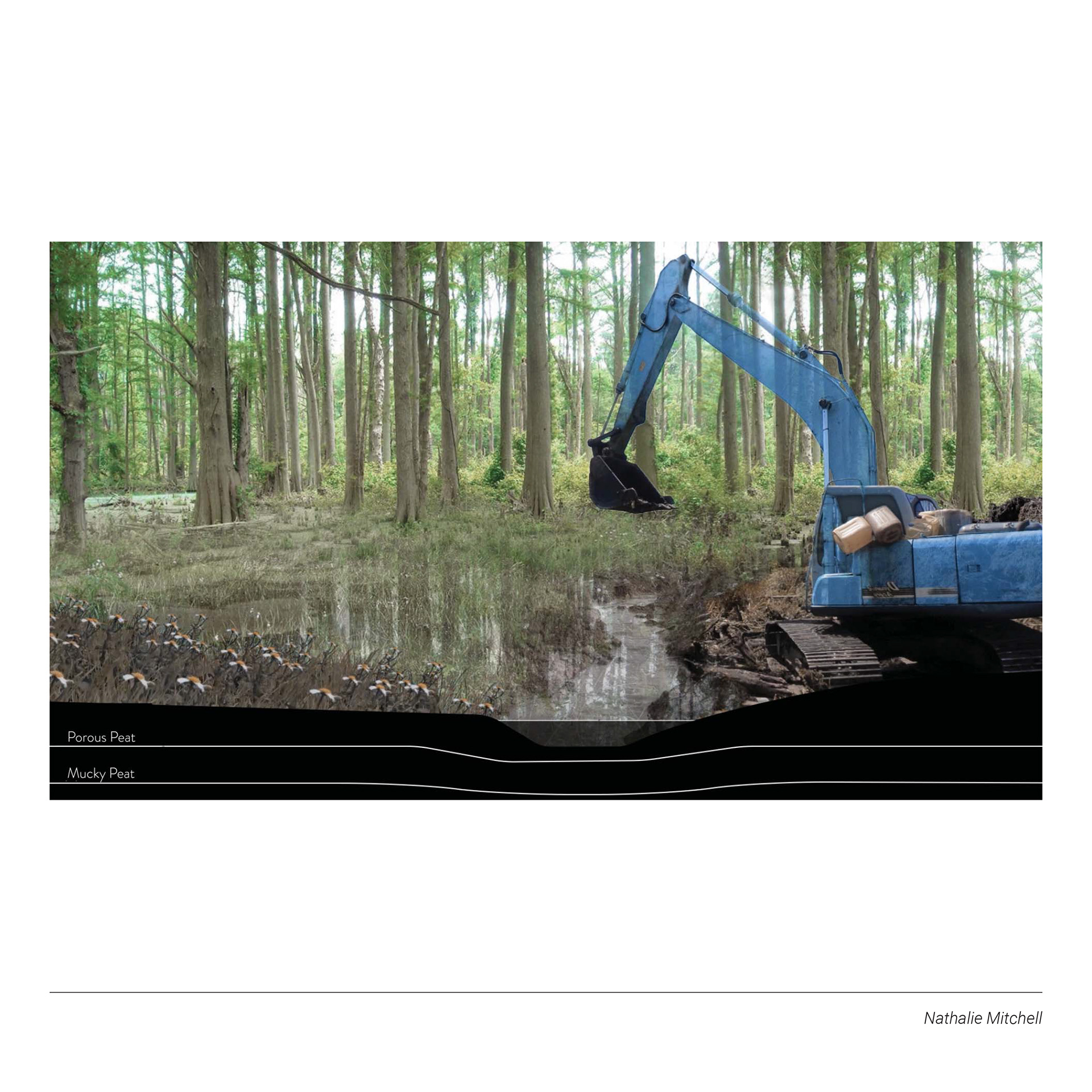

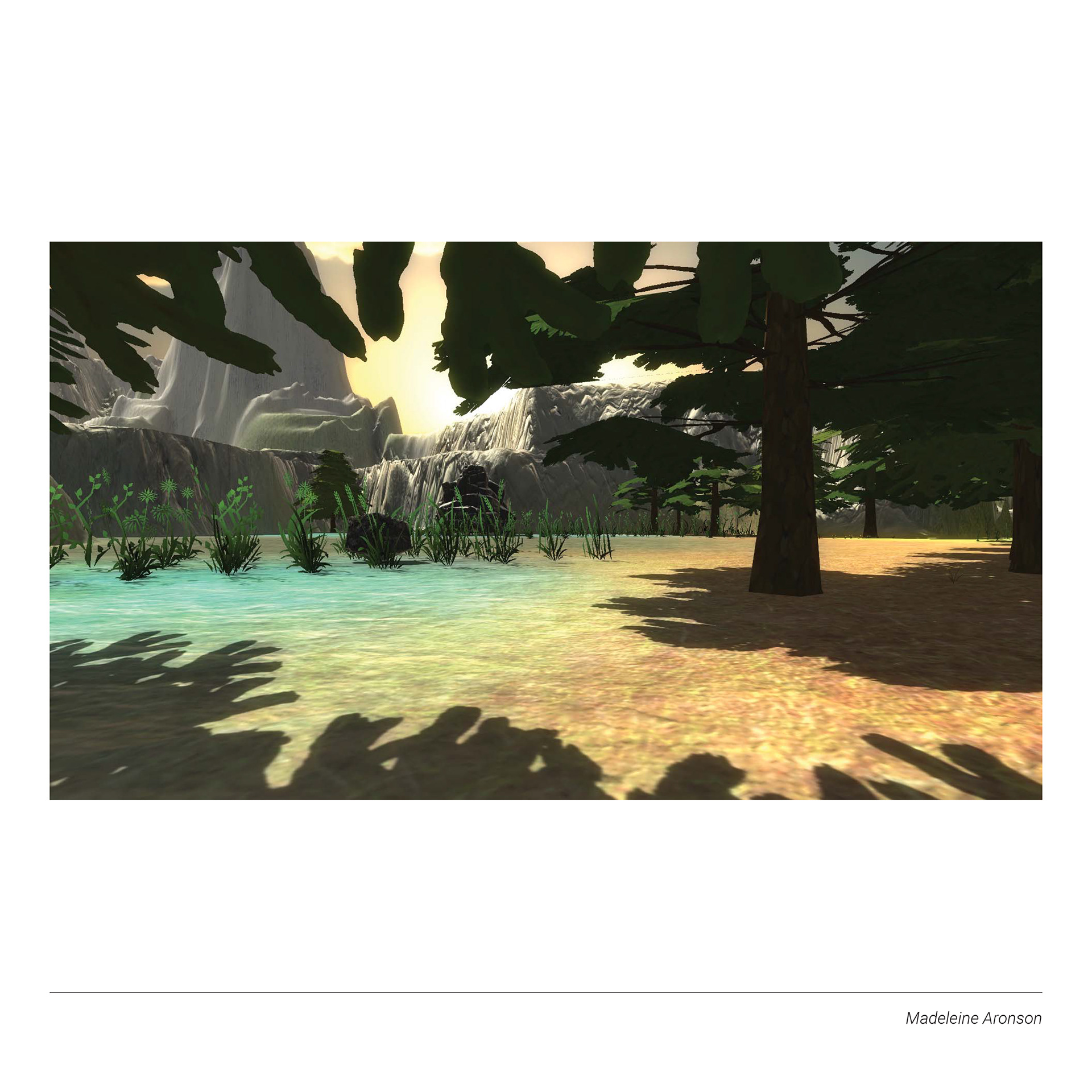
CREDITS
1. Peeraphol Sangthongjai, 2. Alison Malouf, 3. Tami Banh 4. Boxiang Yu, 5. Meredith Chavez, 6. Tami Banh, 7. Ernest Haines, 8. Laura Stacy Passmore, 9. Nathalie Mitchell, 10. Madeleine Aronson.